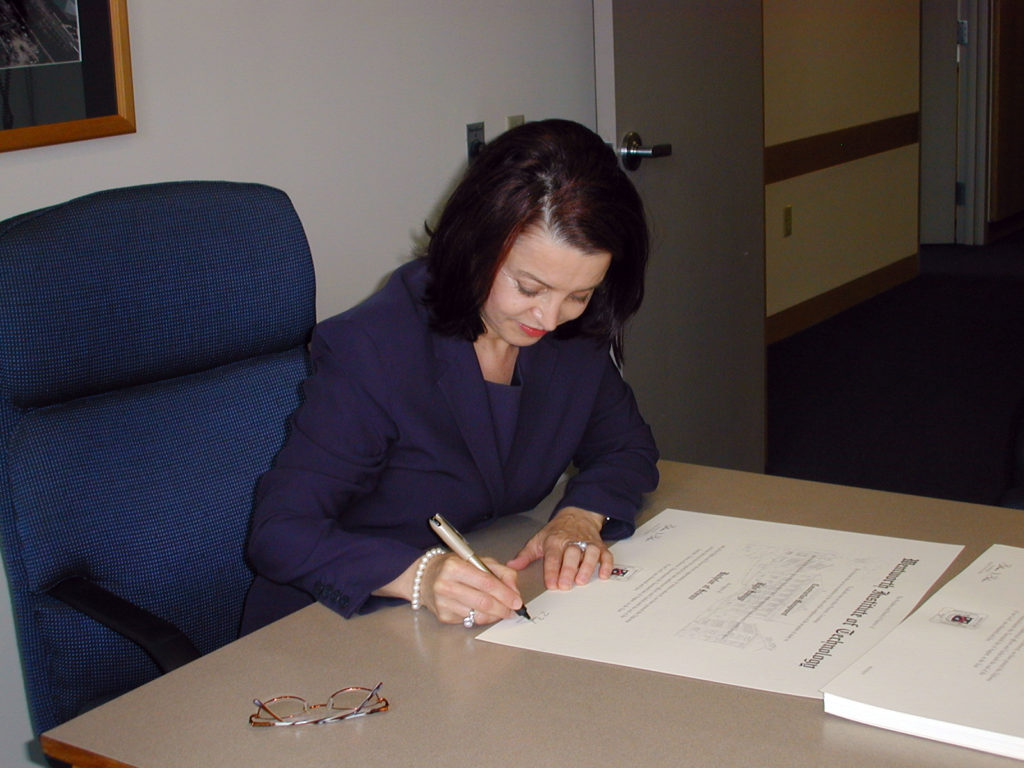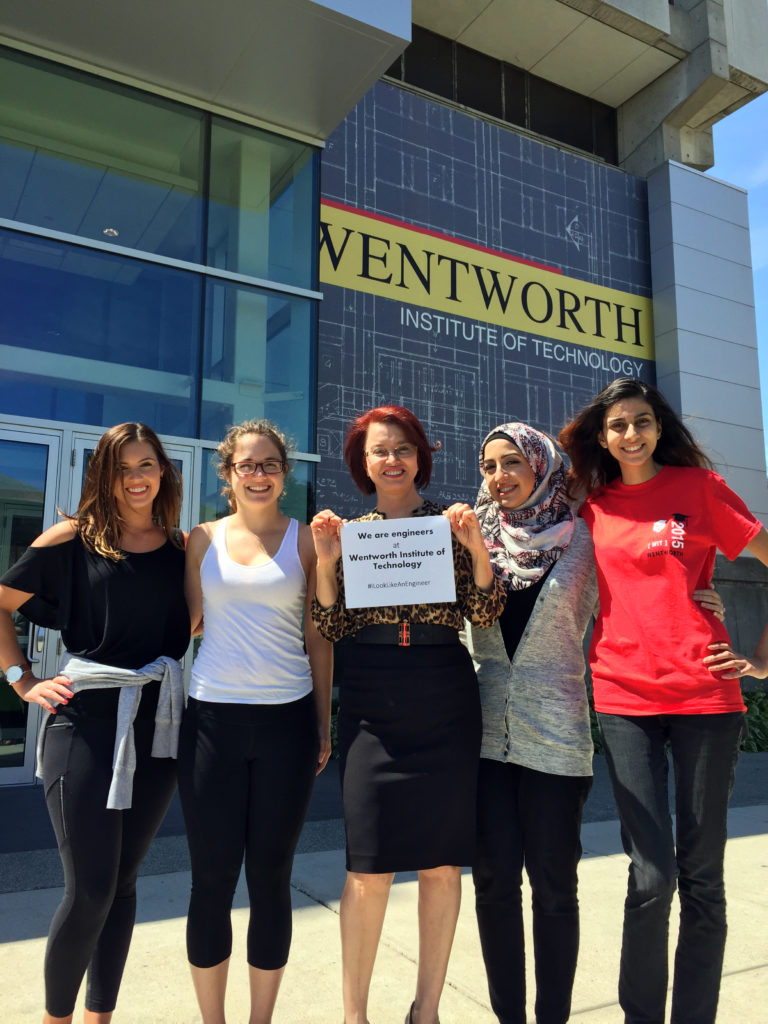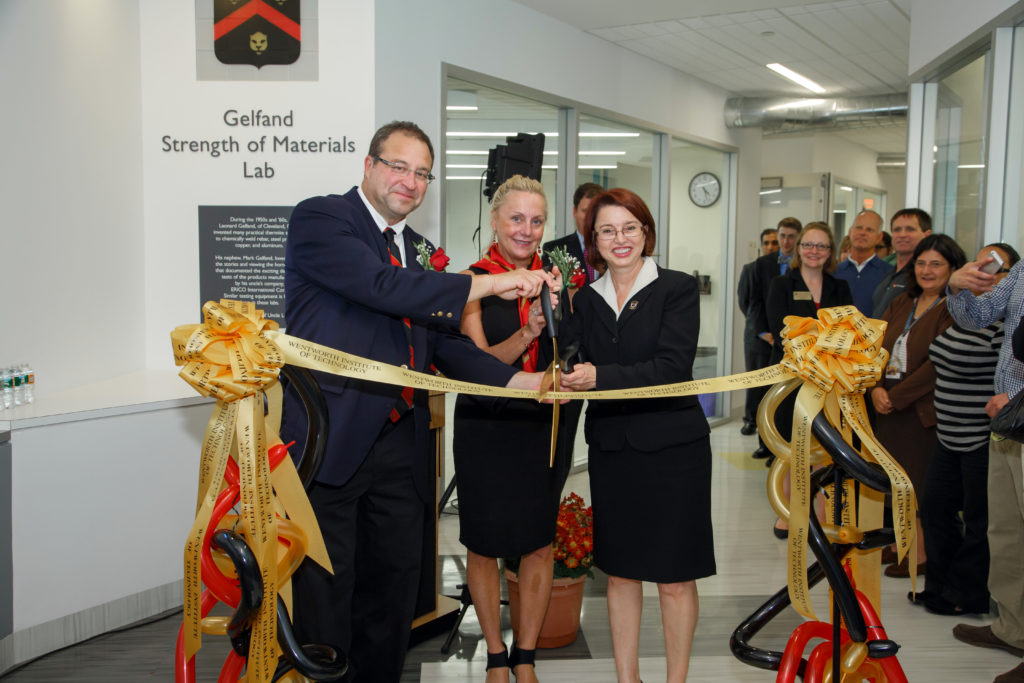
BY GREG ABAZORIUS
As a 7-year-old in Serbia, Zorica Pantic watched her father, an electrical engineer and mathematician, assemble a radio with his M.S. thesis team.
“I decided to help out,”Pantic recalls with a laugh. “I was so impressed with this idea of putting together different components to produce sound. I decided at that time to become an engineer. And I never changed my mind.”
Last August, that aspiring engineer celebrated her 10th anniversary as president of Wentworth Institute of Technology—a decade marked by tremendous growth, both academically (eight new undergraduate programs and five master’s programs, for starters), and physically (two new residence halls and two major capital projects—the Flanagan Campus Center and the Center for Sciences and Biomedical Engineering—have been completed during her tenure).
As we celebrate President Pantic’s anniversary throughout the 2015-2016 academic year, we pause to take a look back on her career and to consider her legacy at Wentworth.

President Pantic’s first official week at Wentworth
COMING TO AMERICA
In 1984, after earning a B.S., M.S., and Ph.D. in electrical engineering from the University of Niš in Serbia, Pantic received a Fulbright scholarship for postdoctoral research at the University of Illinois at Urbana-Champaign. At Illinois, Pantic championed the finite element method (FEM), a numerical technique for partial differential equations that had not previously been used at the school. She was soon teaching others how to apply FEM to microwave transmission lines and high-speed digital circuits.
Pantic’s transition to the States was fairly smooth. “I was pleasantly surprised with how nice people were here,” she says. “They were very supportive.” Adjusting to the geographical landscape took a bit longer. “I had lived in a city in Serbia surrounded by beautiful mountains. But in Illinois, it was so flat—nothing but corn!”
Pantic’s work in Illinois bought her recognition from San Francisco State University (SFSU), where she started as an associate professor before earning tenure and the title of full professor. She taught classes in subjects including electromagnetics, electronics, and circuits. With an equipment grant from the National Science Foundation, she established an applied electromagnetics center at the school. This was the first and only center on the West Coast that supported undergraduate research in the area of electromagnetic interference. She published numerous papers with her student researchers.
Pantic was elected the director of the School of Engineering and Computer Science at SFSU in 1997. She started the school’s computer engineering program, reversed enrollment woes, and helped create a partnership with area community colleges.
After San Francisco, Pantic headed to the University of Texas at San Antonio (UTSA) where she became the founding dean of the school’s College of Engineering. She hired 25 new faculty members, started three Ph.D. programs, increased research funding tenfold, and helped move the school from a teaching university to a research-focused institution.
“It was an exciting time to be there,” she says. “But I thought about the end point and thought to myself that I would really like to eventually be a university president. In that position I could have even more of an impact on even more students.”

The president and Wentworth engineering students
“I’M AN ENGINEER”
Pantic says she was always encouraged to think of herself as an engineer—not a woman in engineering—a concept dating back to her childhood. As one of three children, Pantic watched her older sister become a medical doctor, while her younger brother entered electrical engineering.
“There were no preconceived notions for me growing up that if you are a woman you could not excel in certain disciplines,” says Pantic, noting that roughly 40 percent of the students in her college classes were female. “When I came to America and people asked what I did, some were surprised when I said ‘I’m an engineer.’ They’d say, ‘Oh, you’re a woman engineer.’ I’d say, ‘No, I’m an engineer.’”
Pantic is heartened by the fact that such thinking is eroding, and is especially proud of the work Wentworth is doing to encourage women to enter STEM fields.

The opening of the Gelfand Strength of Materials Lab
A GOLDEN AGE FOR WENTWORTH
Arriving at Wentworth in August 2005, Pantic immediately got to work, helping to move the Institute forward by starting six engineering programs, a three-year program in applied
mathematics, and an interdisciplinary program in computer information systems, as well as five master’s programs, in addition to making Wentworth more of a residential campus.
“I’ve never been satisfied with the status quo,” she says.
The last decade at Wentworth has been a renaissance of sorts. The shift to a college structured education; new residence halls (525 and 610 Huntington Ave.); new and renovated
academic space (the High-Tech Highway and the Center for Sciences and Biomedical Engineering); revamped branding; and a focus on innovation and entrepreneurship have helped lead to record enrollment and fundraising efforts have helped lead to record enrollments, fundraising efforts, and recognition.
Most notably, the Brookings Institution ranked Wentworth among the top seven—out of 4,500 institutions in the U.S.—for occupational earning power. This value helps Wentworth continue to be a school of opportunity for many deserving students.
“Zorica has helped turn a good school into a great school,” says Anil Jha, MET ’68, Hon. ’15.
Now an 11-year resident of the Boston area, Pantic has fully immersed herself in the fabric of the region, and occasionally even finds time for traditional Serbian-style dancing at a
local church.
“She is a very down-to-earth person, and truly cares about the community,” says Tito Jackson, city councilor for Boston’s seventh district. “She rolls her sleeves up and gets on
the ground to work. She cares about making an impact on the campus, as well as beyond it.”
Pantic says she still gets excited when she pulls into the Wentworth parking lot each morning.
“It’s all about the students, and knowing that everything I do is for them,” she says. “I really believe in the idea of ‘students first.’ It’s all about making the environment better for them
and providing a great education.”

